Common Causes of Electric Motor Vibration
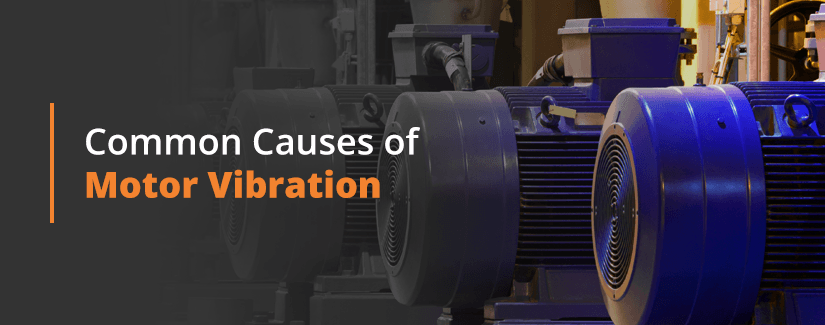
Your company relies on electric motors to perform fundamental tasks, keeping every operation productive. Day in and out, the machines distribute consistent power whether your business is in the construction, manufacturing or automobile industry.
Over time, motors can develop vibrations that can later lead to system failures. Monitoring electric motor vibration and discovering warning signs gives you and your workers time to fix vibration problems and stay ahead of any potential motor breakdowns.
Global Electronic Services encourages all corporations to observe and repair motor vibrations to ensure unmatched uptime and efficiency.
Quick links
Why It’s Important to Monitor Vibration
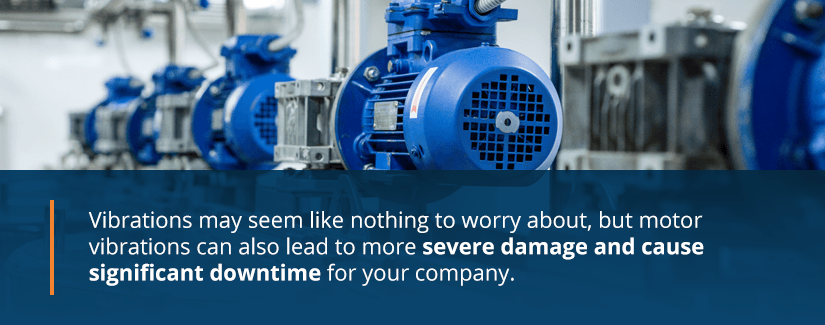
Vibrations may seem like nothing to worry about, but motor vibrations can also lead to more severe damage and cause significant downtime for your company. All motors have a small level of vibration. However, it’s when the movements cease or become more intense that your engineers will need to make reports.
Start by implementing programs to observe each motor vibration and help highlight any problems early on. You can even refer to an electric motor vibration chart for further reference. Calculated vibration trends will give you warning signs of motor failure. Knowing what’s occurring within the equipment will allow for enough time to implement corrective measures.
The overall equipment efficiency — OEE — of motors is a crucial aspect in all industries for applications ranging from pumps, air compressors and fans to conveyor belts and mechanical processes. It’s vital to prevent unexpected failures of equipment to reduce downtime. While they are reliable pieces of technology, the performance of an engine can decline when subjected to corrosive environments and daily use.
As a motor’s performance declines, the success of your operations can follow. One of the most typical causes of worn-out motors relates to vibrations, which often occur because of imbalances in the motor. While many people confuse vibrations with noise, noise is a byproduct of movement. Although they are in a causal sequence, vibrations and noises are two different things. When a motor is working at a standard running condition, one kHz is the boundary between vibration and noise. A vibration equals a measurement of one kHz or less, while anything higher is a noise.
Because vibrations can cause damage in electrical motors, it’s essential for your company to locate the source of vibration right away and correct the malfunction. Simple, right?
It’s not always as easy as you hope. Sometimes, the overall amplitude of vibration is lower compared to other equipment. Meaning, the pulsations formed by internal deficiencies are either not detected or not considered to be a serious modification.
Determining whether or not a vibration is insignificant relates to how it often creates problems over time as opposed to being an immediate threat. Fluctuations will affect a machine’s performance in the later stages, so the reduction of the motor’s performance is not considered significant at the time. But don’t be negligent — it’s in your business’ favor to correct minor issues now so that you aren’t dealing with bigger problems later.
Advanced technologies, such as monitoring and detection tools, support industries that operate with electric motor equipment. They can help your engineers isolate the vibration problem and make necessary corrections to stay on top of crucial tasks. Technology can also locate external conditions that cause vibrations like incorrect motor mounting, unaligned shaft mounting and other disturbances from connected machinery and outside factors.
How to Measure Motor Vibration
Facility managers who want to monitor vibration can do well with various forms of equipment such as:
- Sensor tags
- Vibration recorders
- Shaft sticks
- Vibration meters
- Proximity probes
- Vibration data loggers
- Accelerometers
- Vibration measurement systems
Your company can rely on advanced technology for accurate measurements and data to help your engineers pinpoint excessive levels of motor vibration. Different calculations, however, require specific tools to assure precise readings.
Shaft and Housing Vibration
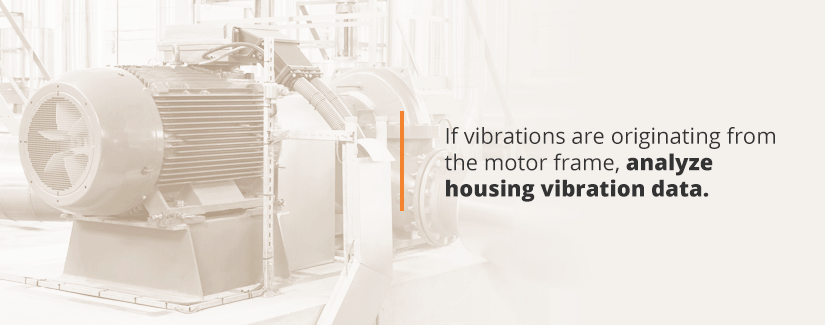
If vibrations are originating from the motor frame, analyze housing vibration data. If the problem stems from the rotor, gather shaft vibration information. Both use different measuring tools. The first uses an accelerometer, and the latter uses a proximity probe or shaft stick.
A proximity probe determines vibration data of the shaft based on a reference point, while a shaft stick involves placing a handheld accelerometer attached to a rod against the rotating surface of the shaft. Make sure to use a reference when calculating housing vibration levels.
Compute the Correct Direction of Measurement
When looking at housing vibration, it requires measurements in three planes — axial, horizontal and vertical, while shaft vibration requires two directions — 90 degrees apart on one end of the motor. If the engine at hand already has proximity probes, place them at 45-degree angles on both sides in reference to the upper vertical center.
You can measure vibrations in several ways like computing units of displacement, velocity or acceleration. Displacement data highlights low frequencies. Velocity info gives equal emphasis to all frequencies, and acceleration details highlight high frequencies. Shaft vibrations go hand-in-hand with displacement units while housing vibrations use velocity.
Determining the Effects of Different Operating Conditions

As your engineers obtain vibration data, be aware that other factors like noise, amplitude modulation and combined signals can influence the information. Once you calculate your data, find out what operating conditions cause the motor vibration to increase, decrease or remain the same. Different settings can affect the amount of vibration. A coupled, loaded, stabilized and full-voltage machine should be your controlled variable under regular conditions. Measurable operating conditions that can separate particular variables include:
- Coupled, unloaded and full voltage: Can remove most of the load-related vibrations.
- Uncoupled, unloaded and full voltage: Removes the effects of the coupling and mechanical load, isolating the base system from the calculations.
- Uncoupled, unloaded and reduced voltage: Decreases effects of a magnetic pullover, creating a possible 25 percent voltage reduction when relying on a service shop. If you have a Y-Delta connected motor, the “Y” connection has a 57 percent voltage compared to a “D” connection. Comparing the vibration of both connections will illustrate the voltage sensitivity of a motor.
- Uncoupled, unloaded and coast down: Shows the resonance or critical speed problems within a motor system.
Main Causes of Electric Motor Vibration
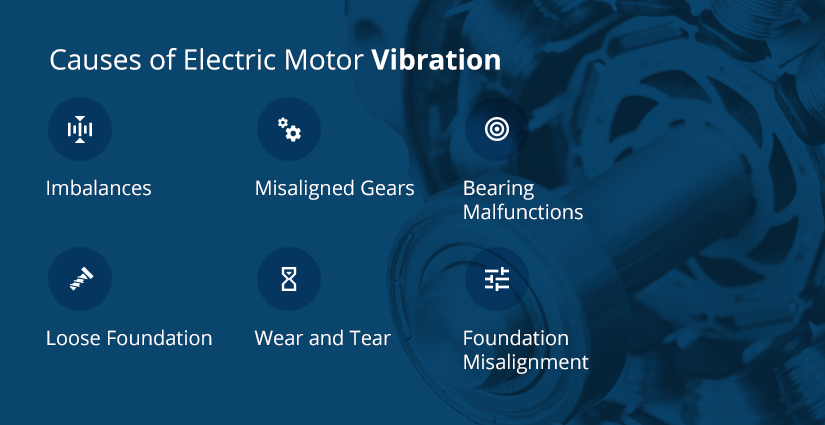
It all boils down to the understanding that one condition or a combination of elements can lead to motor vibrations — and it’s not always easy to find the culprit. This is especially true since irregularities can arise from supplementary devices and not only stem from the equipment itself. The main causes of motor vibration include, but are not limited to an electronic or mechanical imbalance, faulty gears, failed bearings, loose foundations, wear and tear or misalignment.
- Imbalances: An imbalance is like a weighted spot in the rotating component of a motor. When the unbalanced weight moves around the axis, vibrations begin, and a centrifugal force becomes present. Centrifugal force is an uneven distribution of weight that’s directed radially outward. An imbalance can be caused by mechanical defects like casting flaws, machining errors or maintenance concerns such as dirty fan blades or missing balance weights. As motor speed increases, so does the imbalance that begins to reduce motor and bearing life.
- Misaligned gears: Motor gears often create a vibration because they mesh together, but not in a negative sense, until they become misaligned. As gear teeth begin to lose contact or become broken and worn down, they can grind on one another, causing a hazardous vibration. Brittle lead wires can also cause brush sparking at current collector rings or commutators.
- Bearing malfunctions: Loose bearings are the beginning of other motor malfunction. When bearings start to loosen, vibration can spread to other components. Without proper bearing lubrication, the pieces wear out fast. Fluctuations can even create indentations on the bearing raceways, often at the roller or ball spacing.
- Loose foundation: When a motor is loosely attached to its mounts, it allows vibrations to cause more damage to the bearings. Improper mounting can cause wear and fatigue on the mounts and other motor components. If no one is checking the foundation of the bolts, mechanical damage to the motor’s insulation can occur, resulting in erosion, flaking or fracturing of the material.
- Wear and tear: General wear on a motor’s roller or ball bearings, gears or drive belts cause vibrations. When a roller bearing race becomes rutted, the bearings can create movement each time it travels over the pitted area. A chipped gear tooth or the weathering of a drive belt can also create vibrations.
- Foundation misalignment: When a machine’s shafts are unaligned, two things can happen. Angular misalignment occurs when the axes and pump on a motor are not parallel. Parallel misalignment is when the axes are parallel but not aligned. Either can develop over time or be a result of improper assembly. If misalignment happens over time, it can be because of shifting components, faulty reassembly or thermal expansion, causing radial or axial vibrations.
With potential causes of vibration amounting to more than one possibility, it’s vital that you and your team adheres to a monitoring program. When your operators can recognize developments in a variety of machines, it will make the repair process easier, helping to keep business flowing.
Be aware that vibrations can also come from outside sources whether it be other motors, machines or units that connect to your equipment. While vibrations may stem from external factors, remain diligent in checking internal sources of motor vibration.
How to Troubleshoot Vibration
Isolating the cause of motor vibration and other underlying problems can be tedious, but it’s not impossible. While some procedures rely on advanced forms of technology and programs to determine a solution, your business can rely on simple techniques to find vibrations and make repairs.
Start by asking questions your workforce can answer within a few short moments. If motor vibrations persist, move into the troubleshooting process of determining the mounting, foundation, rotor critical speed, natural frequency and motor shaft and coupling half performances.
Questions to Ask and Consider Before Troubleshooting

Because a vibrating motor can be the result of a variety of causes, you and your operators should begin with a few simple questions to narrow down the source:
- Are the bolts tight?
- Is “soft foot” prevalent?
- Is hot alignment satisfactory?
- What about cold motor alignment using thermal compensation checks?
- Is any part of the motor excessively vibrating?
- Are any vibrating elements attached to the motor resonant?
- Is the motor frame vibrating at higher levels than the engine?
- Are there any loose motor shaft parts?
- Any eroded or broken fan blades?
- Is the coupling lubrication up to par?
Check for soft foot by loosening the hold-down bolts that pass through motor mounting feet. Each should showcase less than .001 inches of vertical movement in reference to the mounting foot shown by a dial indicator. If there are more than .001 inches, installing shims should eliminate the problem. Two-pole motors are most affected because of their electromagnetic forces.
The purpose of shims is to fix soft foot and to help adjust the alignment of a machine. You will want them to cover as much foot surface as possible, and the thicker the material, the better. Too small of a shim won’t support the motor, while too many can create an increase in vibration problems known as sponge foot. Sponge foot is where the foot of the mount becomes springy and less rigid.
If the motor frame is vibrating more than 25 percent compared to the motor, it could relate to a weak motor base. If the vibration remains after asking the 10 questions above, conduct a vibration troubleshooting analysis to find the exact source.
Actions to Take to Fix Motor Vibration
The first step is to isolate the cause of vibration. By using vibration analysis tools along with advanced software, your company can detect mechanical and electrical motor imbalances, improper alignments and other factors to rectify vibrating problems sooner than later. But even when engineers re-balance a motor, residual imbalance still exists. Manufacturers often balance machines to a normal grade, but they can also construct reduced and special categories when appropriate.
Electrical motors can be dynamically or statically balanced, which means your team will need to use different methods of detecting the vibration balances at hand. For example, use dynamic strategies if working with the rotor. Here’s how to readjust and fine-tune a vibrating motor.
Troubleshooting the Motor Mounting
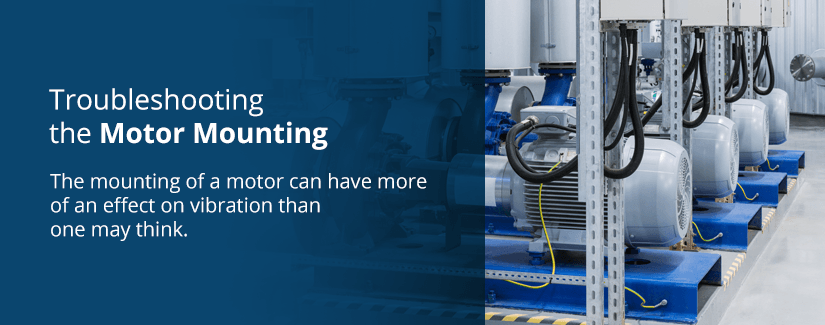
The mounting of a motor can have more of an effect on vibration than one may think. Here is a quick process to follow on how to eliminate a variety of possibilities to find the source of vibration:
- Check the mounting of the motor shaft: Make sure the motor is level, aligned and fastened to its foundation. Failure to mount it properly can lead to hazardous vibrations. Improper alignment can also form unnecessary and extra mechanical loading on motors that results in increased energy use and reduction in life. If uneven mounting exists, use shims to level it out and use tight and sturdy bolts that are the correct size and suitably torqued. Are there misaligned shafts? Correct it using a laser alignment tool for the best accuracy.
- Disconnect the motor: If neither an uneven mounting nor an uneven shaft is the problem, then disconnect the motor. If it runs smoothly, workers can conclude the faulty source is in the driven equipment. Isolate the engine from the driven source by implementing vibration absorbents like elastomeric couplings.
- Turn off the power: If the vibration continues after pulling off the motor from the driven load, turn off the supply. Cutting off the power may cause the vibration to stop. If so, then the problem lies within an electrical motor imbalance. If pulsations continue as the machine winds down to a stop, then there is a possible mechanical imbalance.
Electrical imbalances often relate to defective motor components like rings, rotor windings and stators — or even an irregular magnetic attraction between the stator and rotor. With irregular attraction, the motor shaft begins to deflect as it rotates, forming a mechanical imbalance.
Troubleshooting the Machine’s Foundation
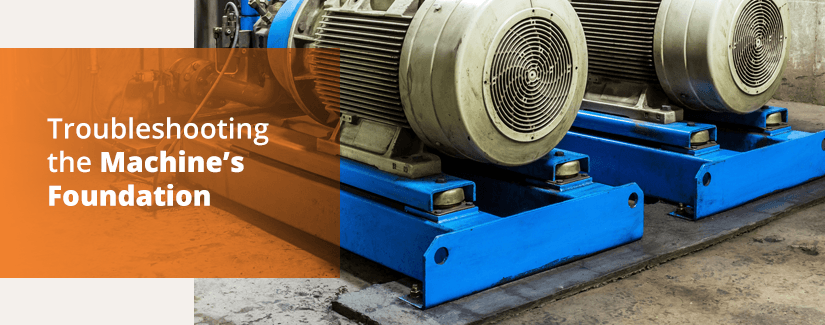
The motor’s mounting and foundation correlate to the amount of vibration present. The equipment’s base can play a crucial role in its vibration levels and goes hand-in-hand with the mounting work. Try to implement a large and rigid base because it’s less active — meaning it can reduce any background vibration and minimize the overall movement of a system compared to a weak option.
In some cases, however, large foundations may not be possible because of limited space or budget. Many companies default to unsteady bases, but it can lead to increased vibration problems. Make sure to start the right way to limit repairs with a proper groundwork. Do your workers suspect the foundation to be the cause of vibration? Check the foot and background movement levels using impact testing.
A flexible and active foundation allows more movement and transmission of vibrations to the motor. In contrast, rigid bases limit the amount of vibration that meets the machine, stopping the transmission.
Troubleshooting and Determining Rotor Critical Speeds
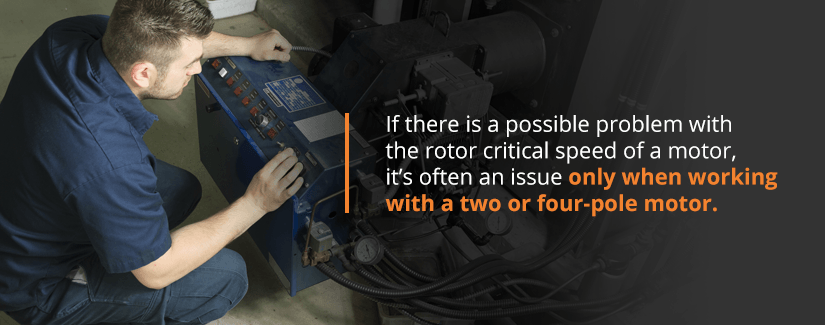
If there is a possible problem with the rotor critical speed of a motor, it’s often an issue only when working with a two or four-pole motor. To determine rotor critical speed, your team should calculate non-contact shaft probe data when high levels of one-time shaft-speed amplitudes are present.
Record data such as 1 x RMP vibration amplitude as well as phase angle when the motor is at no-load speed up until the shaft stops rotating. Recording data in increments of 10 RMP plot it in a polar grid. It’s an industry standard that rotor critical speed shouldn’t be within 15 percent of the operating speed for a motor with a single setting.
Your workforce can also use coast down testing to see if excessive vibration stems from mechanical or electrical faults. Record the current vibration levels, then turn off the equipment’s power. If it declines or stops, you can conclude it’s an electrical problem.
Troubleshooting Natural Frequencies
Natural frequencies can become a problem if they coincide with the forcing frequencies of a motor. When vibration in a machine is higher in one axis compared to the other, it can cause issues. The best way for your company to calculate natural frequency is by using a dual-channel impact test.

Working with a modal hammer and vibration transducer, you can determine the frequency response function and phase data of the motor. Phase data helps engineers see if a natural frequency is present by comparing amplitude and phase shift.
Troubleshooting Motor Shaft and Coupling Halves
A mechanical imbalance in a motor can come from improper key trimming in the coupling hubs. The proper key installation uses a full key for where the coupling hub rests and then steps to a half key. Using a full key that doesn’t step down can create a mechanical imbalance.
It may seem like vibration origins are endless, but making a few vital checks can minimize risks and increase motor reliability. Taking the time to troubleshoot any excessive levels can safeguard your production lines in the future and keep your operations running.
Contact Global Electronic Services

If your engineers begin to notice vibrations in electric motors and other machines, reach out to our factory-certified technicians to receive a quote. We evaluate the unit before starting maintenance, and our immediate services in repairing and replacing engines minimize your company’s downtime. Catching vibrations early on can eliminate the hassle of modifying more significant and costly damage down the road.
Call Global Electronic Services at 877-249-1701 or request a quote online.